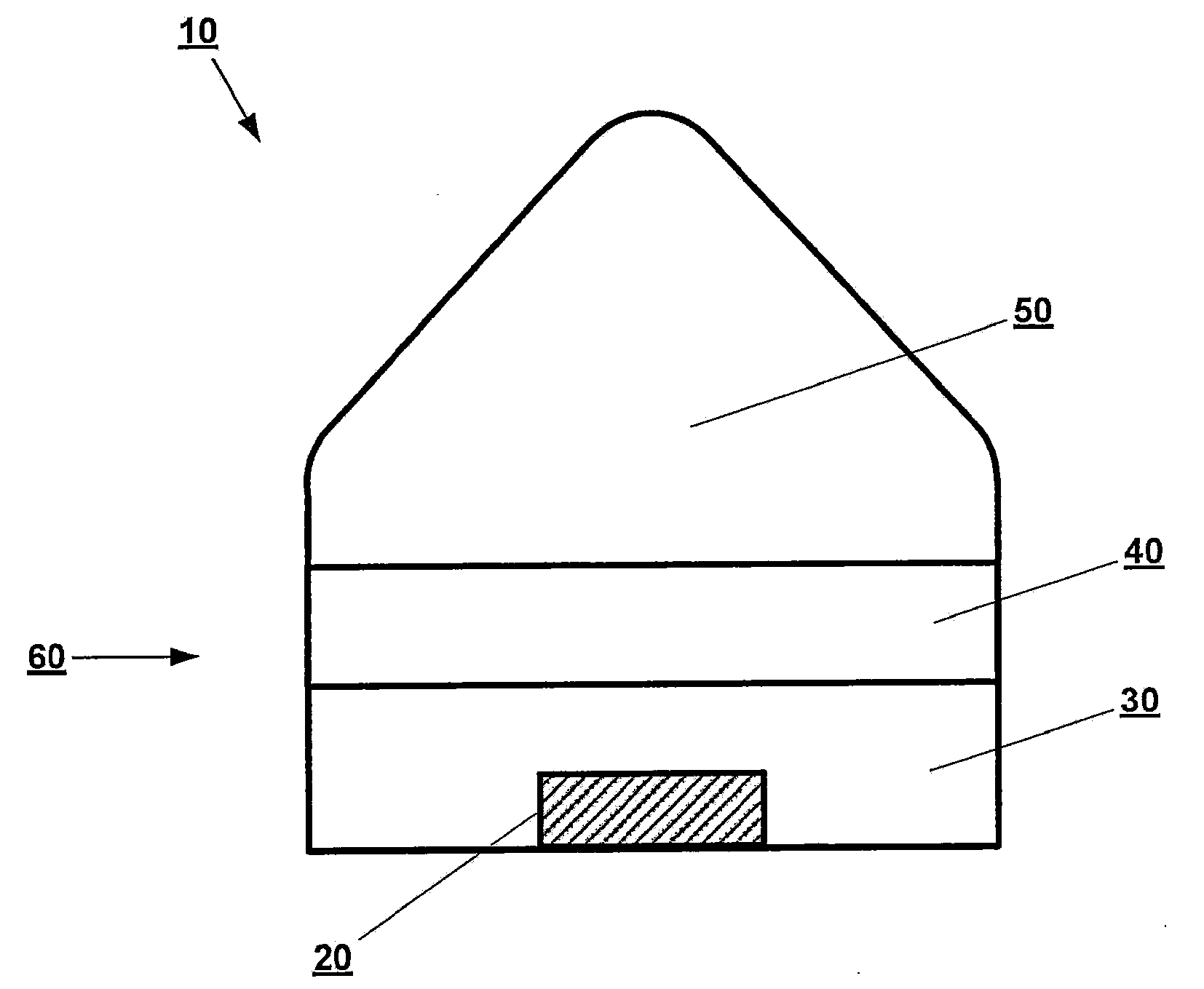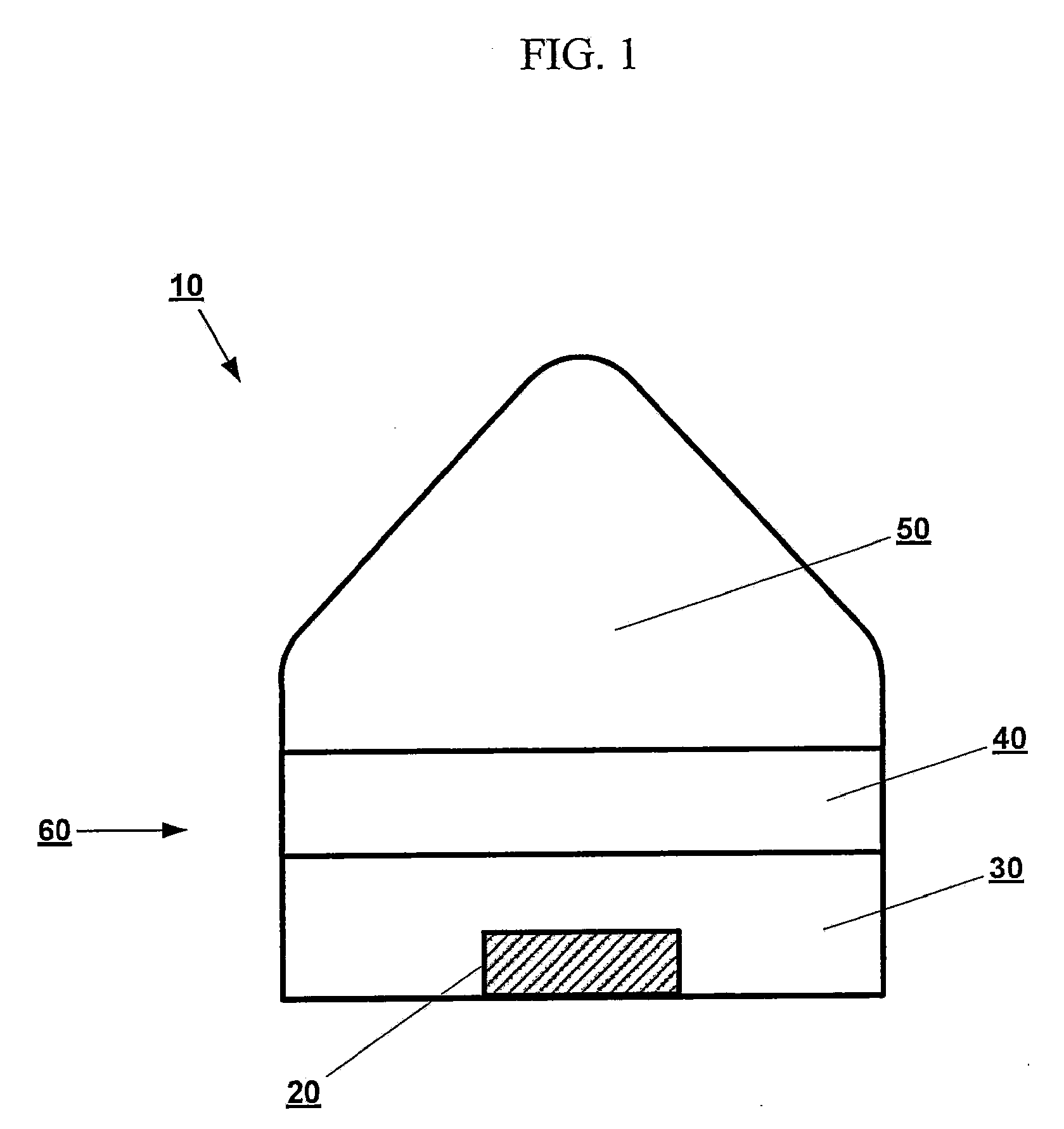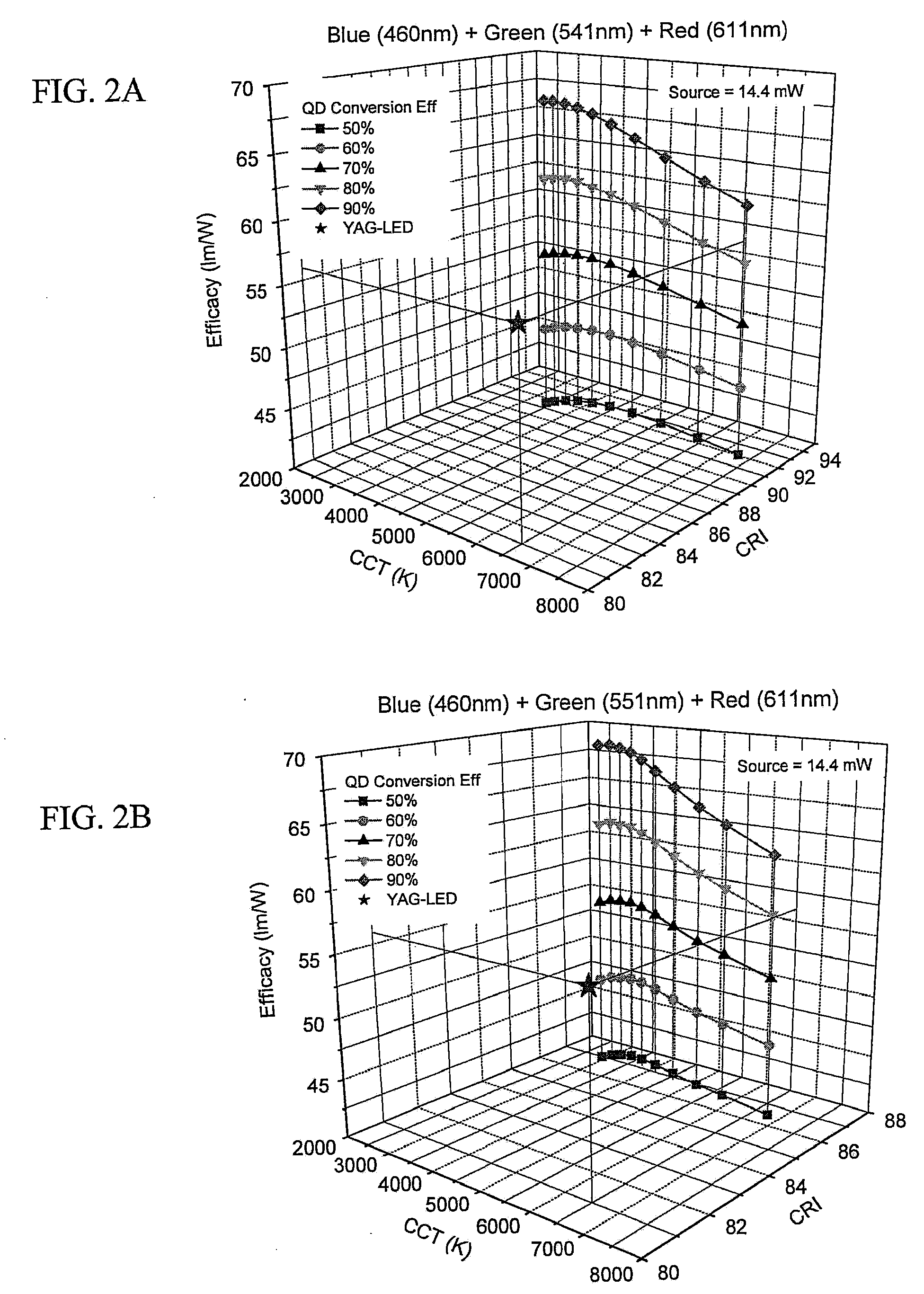Light-emitting device having semiconductor nanocrystal complexes
a technology of semiconductor nanocrystals and light-emitting devices, which is applied in semiconductor devices, semiconductor/solid-state device details, electrical devices, etc., can solve the problems of reducing efficiency of “warm white” leds made from a combination of yellow and red, affecting the display of red matter, and affecting the appearance of red matter
- Summary
- Abstract
- Description
- Claims
- Application Information
AI Technical Summary
Benefits of technology
Problems solved by technology
Method used
Image
Examples
examples
[0088]Specific representative examples will now be described, including how such examples were prepared. It is understood that the specific methods, materials, conditions, process parameters, apparatus and the like are non-limiting.
[0089]Various Active Layer Locations on the LED
[0090]Devices according to embodiments of the present invention may be fabricated on low power SMD-type LEDs, such as those available commercially from Cree, Optosupply, and Knowledge-On Inc.). To place a semiconductor nanocrystal layer in various locations, different volumes of matrix for a first encapsulant layer were deposited on blue light emitting LEDs. Three test devices were prepared with volumes for the first encapsulant layer of 0, 1.4, and 2.1 μL for devices 1, 2, and 3, respectively. Each 1 μL can make thickness in the range of 0.1-1 mm, which is dependant on the LED size, type and form factors. The Knowledge-On LED has the form factors with 2.4 mm in diameter and about 1 mm in depth, and surrounde...
PUM
 Login to View More
Login to View More Abstract
Description
Claims
Application Information
 Login to View More
Login to View More - R&D
- Intellectual Property
- Life Sciences
- Materials
- Tech Scout
- Unparalleled Data Quality
- Higher Quality Content
- 60% Fewer Hallucinations
Browse by: Latest US Patents, China's latest patents, Technical Efficacy Thesaurus, Application Domain, Technology Topic, Popular Technical Reports.
© 2025 PatSnap. All rights reserved.Legal|Privacy policy|Modern Slavery Act Transparency Statement|Sitemap|About US| Contact US: help@patsnap.com



